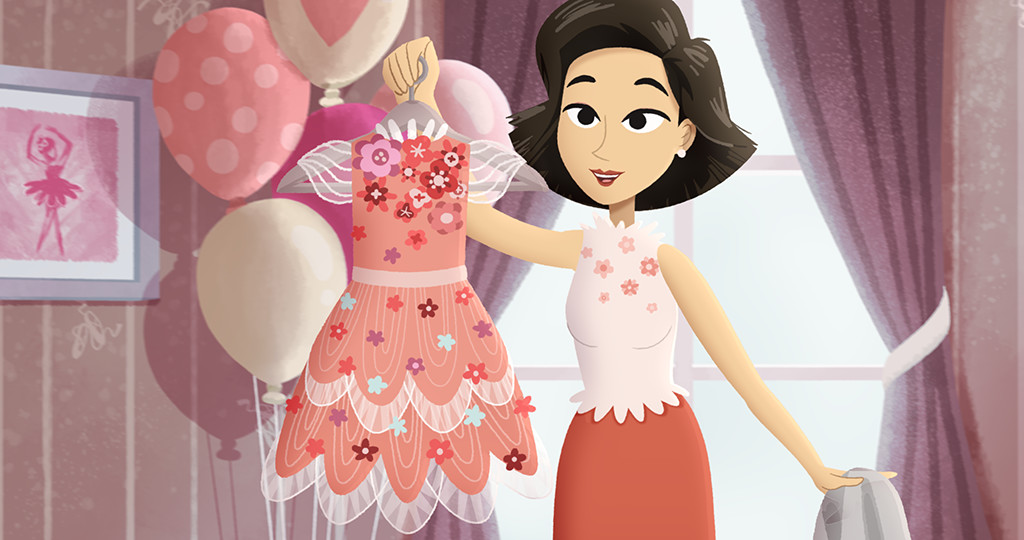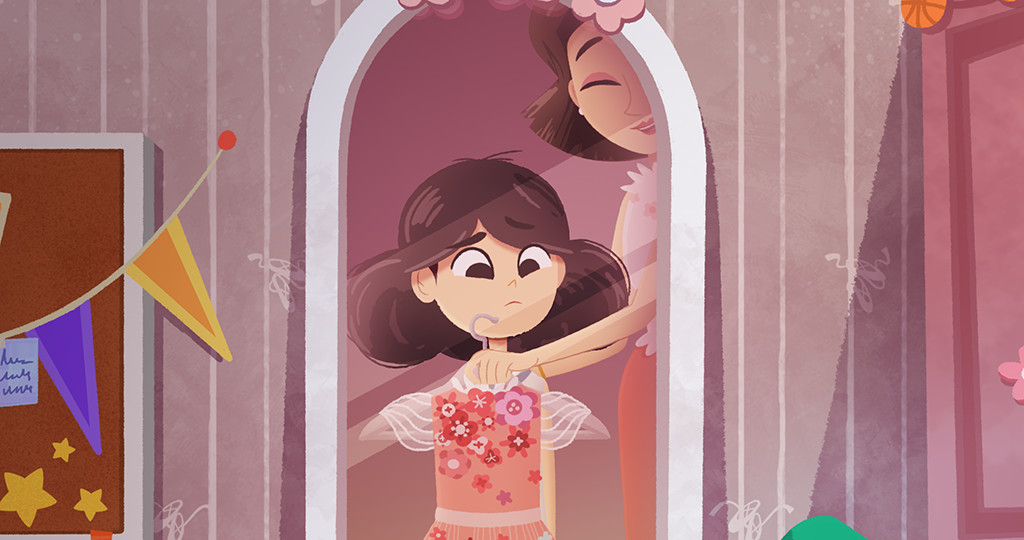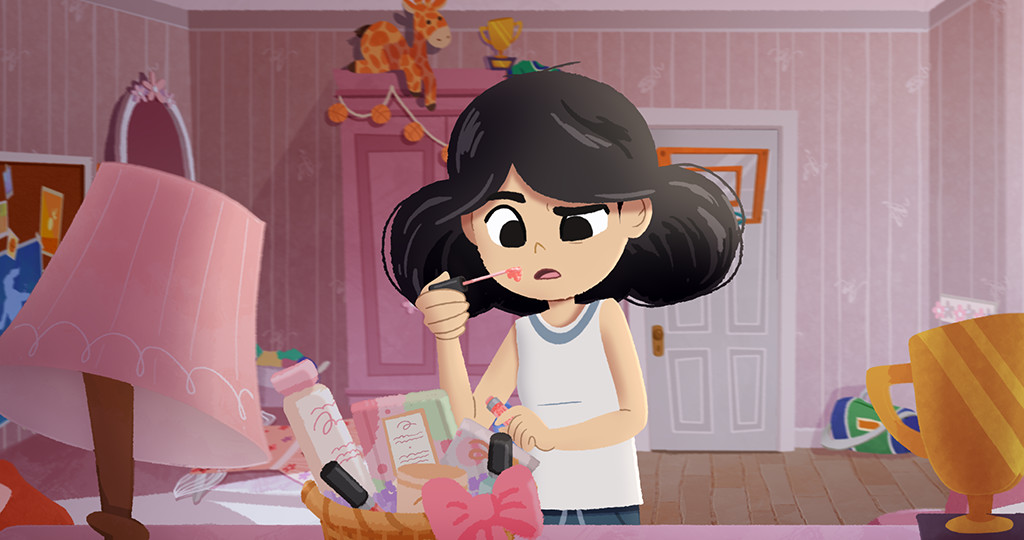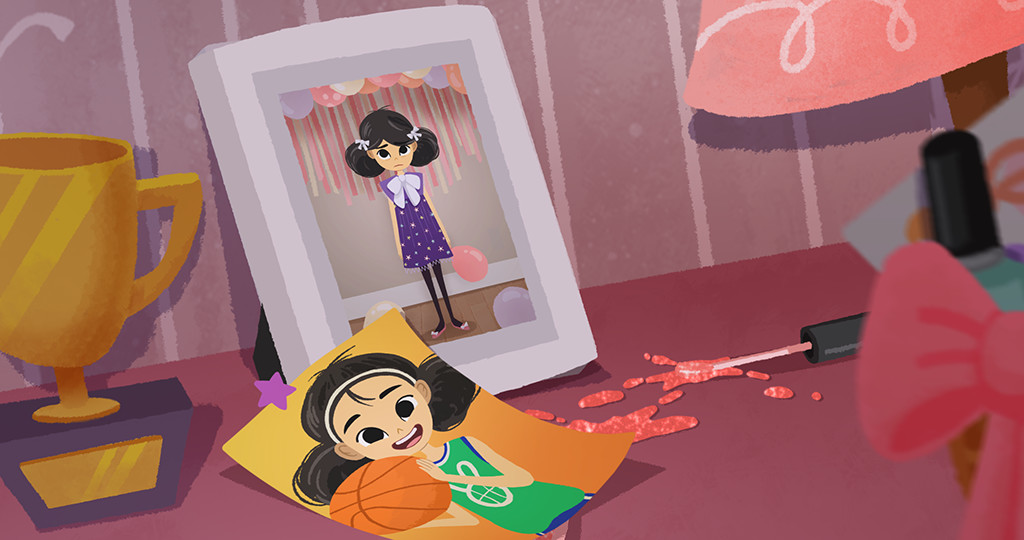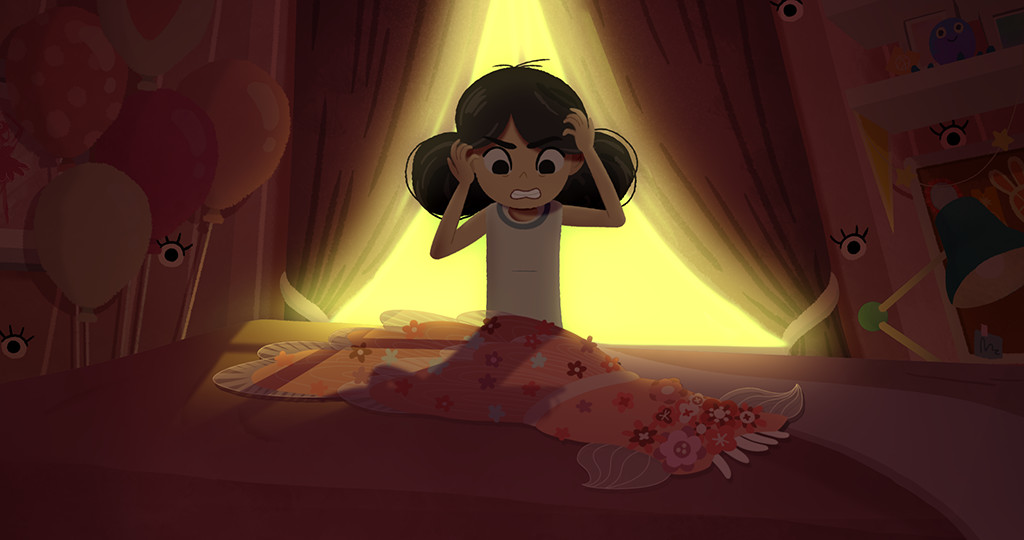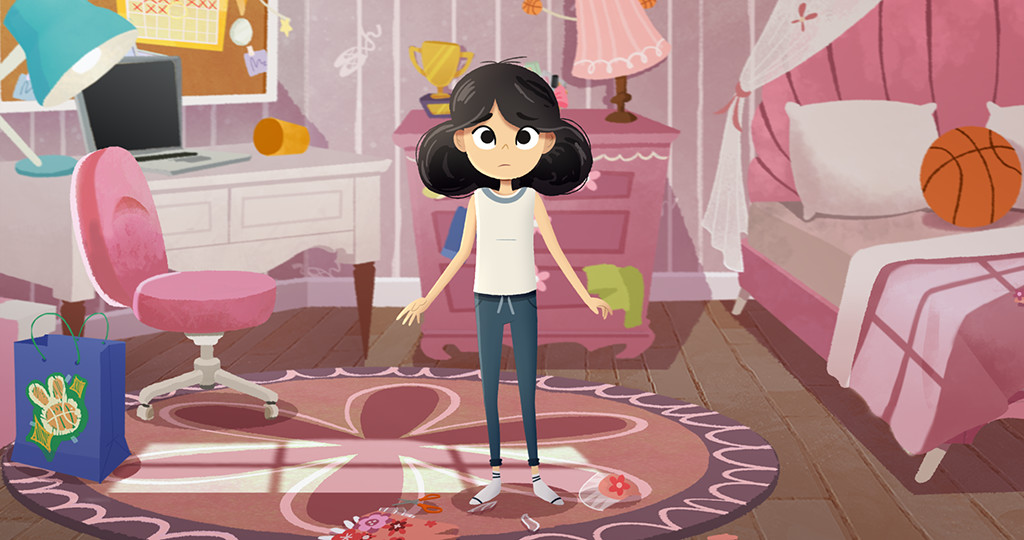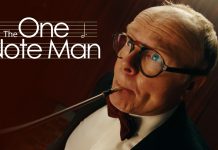The story was created by our screenwriter Robyn Campbell, and it mixes a bit of her own experiences with the experiences of a friend of hers.
Her friend had to wear overly feminine dresses for special occasions and it made her feel awful, also Robyn herself recollects being put in big dresses that would stop her from being able to play freely with other kids.
The beautiful thing about the script is that it feels very universal, and every person that would join our team working on the film felt closely related to the story, which made this feel like a collective cathartic experience for all of us.
You had a big production team working on this. How did you dovetail each of the specific departments in putting the animation process together?
Pivot was made as part of the second iteration of the ACE Program by Women in Animation Vancouver with the goal of giving six mid-career women in the animation industry a key creative credit so that they could leverage into higher positions.
The six key creative roles are Production, Direction, Writing, Art Direction, Animation Direction and Music Composing. The program funds the film and provides mentoring and training with active industry professionals during the making of the film;
As the Director, I collaborated closely with the all main creatives in the film and over sought the whole process of the making, along with our Producer, Tini Wider. And because we worked on the film during the pandemic, all of our meetings were online until the end of the project.
It started with working together with Pivot’s screenwriter, Robyn Campbell to adapt her script into animation. After that, I worked with Storyboard Supervisor Jae Harm to craft the storyboards and with our Art Director Cindey Chiang to develop the visual language of the film. Once that is done, we go into editing, with Editor Bing Xue to finesse the pacing of the film.
From there, we start to recruit a team to help us with Designing the characters, backgrounds and props. Layout came next, followed by BG painting. Then, we were good to go into animation, led by our Animation Director Erica Miles, who coordinated a team of animators to bring our beautiful art to life.
In tandem with the animation, we had a team of FX animators, led by FX Supervisor Betty Lu to help us make the incredible special effects you can see in the film.
Our Compositing Supervisor Debora Slikta and her team bring all the layers together and add special lighting, shadows and additional fx to complete the film. To tie it all up, our film has music composed by the talented Eva Pekarova.
How long did it take to make?
We worked on this short film for about 9 months.
You consciously limited dialogue expression in this short. Was this a deliberate creative choice from the outset?
The original script had dialogue but during the writing mentoring process it became clear that by removing the spoken dialogue the story would be appealing to a broader audience.
Not only that but by removing the dialogue, we let the visuals shine and drive us through the story and the emotional path our character, Ashley, goes through. Our music also plays the part of the dialogue at moments, which was an intentional choice from our composer Eva Pekarova.
Who and what are your key cinematic influences?
In the making of Pivot, many influences took part.
For the character development, we looked to films that portray the relationship between mother and daughter, like Brave, Coraline and The Little Prince.
For the story pace, we were influenced by Hair Love and One Small Step, both really wholesome short films.
For the monster and the horror feel of the film, we looked once again at Coraline with a dash of Guillermo Del Toro’s Pan Labyrinth and Madoka Magic.
Tell us more about the unusual visual animation style you went for.
The style of Pivot was developed by our Art Director Cindey Chiang. During the selection process for the ACE Program, all the candidates had to pitch a visual proposal for the film. When Cindey presented her idea for the Dress Monster character it immediately clicked on me that that was our film’s style.
Once selected, Cindey and I explored many different paths and ideas, but we always came back to her original design pitch. The Dress Monster you see in the film is an evolution from it, but it all started on that original art Cindey made: the texture, the shape language, the colours. She nailed it from the start.
You are based in Vancouver. How does working there as an animator differ from working in Hollywood or at Disney?
The animation industry in Vancouver in its majority a service industry to Hollywood. Due to the incentives of Tax Credits, studios and Vancouver produce animation and visual effects for studios in LA. So, in terms of content, it might be almost the same, but we often don’t get as much credit and the wages are not the same.
Would you like to expand on the issues and themes in PIVOT into a feature story and what other themes would you like to explore in other future projects?
Yes, we would love to expand on the themes of Pivot and make it into a feature. There were a few additional characters and moments we, unfortunately, had to cut from the short that would take the story to a new level and still appeal to a global audience.
As for other themes, lately, I’ve been reflecting a lot on the experience of being an immigrant and I would love to explore it in an animated short film.
You have worked as an animator for the likes of Netflix and Dreamworks. What are the key things you’ve learned from working for them that have helped shape your work on PIVOT?
I feel that every production I have worked on has taught me something. But one of the biggest lessons I learned working in this industry is that making good content with a meaningful message really matters.
Big flashy shows with crazy looks are certainly fun, but there’s something really special about making an honest and simple show that appeals to a larger audience and helps people process and start conversations in their own lives. I really wanted to bring some of that into Pivot.
Beyond the looks, I felt that the short film had to speak to both children and parents worldwide, something for them to watch together and share a good time.
How has the festival circuit helped this short?
The festival circuit has embraced Pivot world widely, and it has helped us take the film to audiences in places we never thought we could reach. That’s fantastic, honestly.
At this point, Pivot has been in over 32 film festivals around the world, won 5 awards, and been in multiple nationwide theatrical tours, and a clip of it on TikTok now has 1.4 million views and hundreds of comments from young people around the world who relate to the experience of Ashley.
Finally, what are you most proud of about PIVOT?
I’m immensely proud of the team that came together to make Pivot.
I grew up listening to a lot of mixed messages about women working with women, that women are not trustworthy and that we fight when we work together… but honestly, working with this majority-female team has been a fantastic experience.
We collaborated respectfully, came up with solutions together and cheered for each other’s successes. I’m very proud of myself and my colleagues for making a beautiful, wholesome and truthful film.


